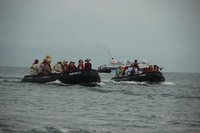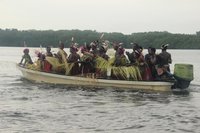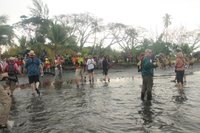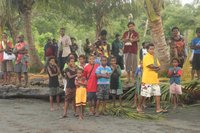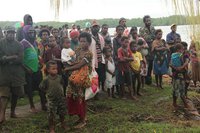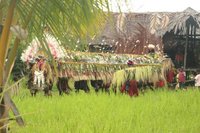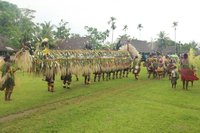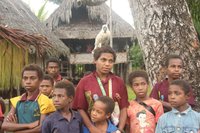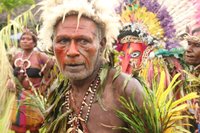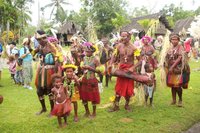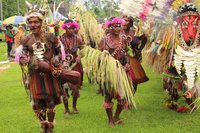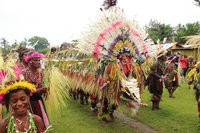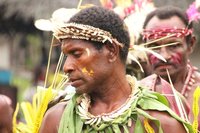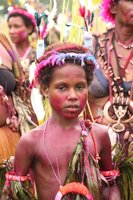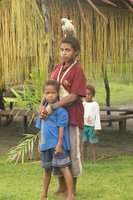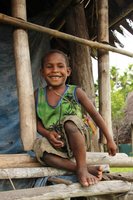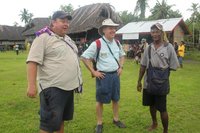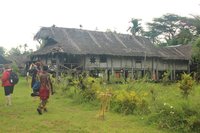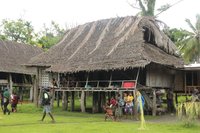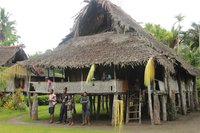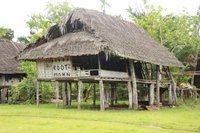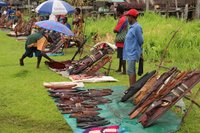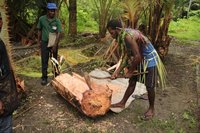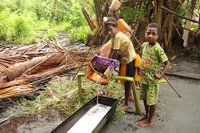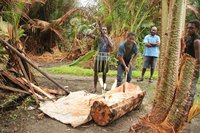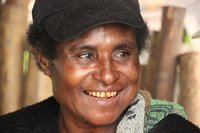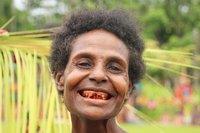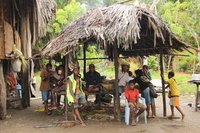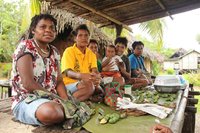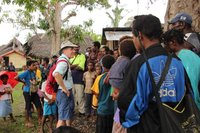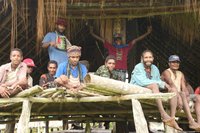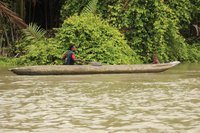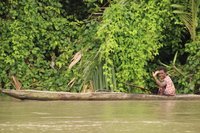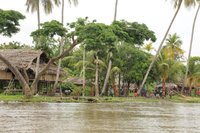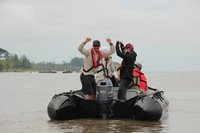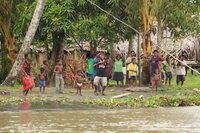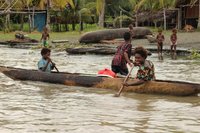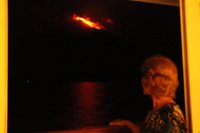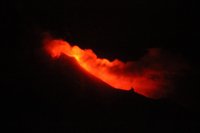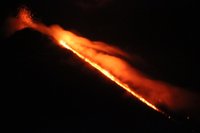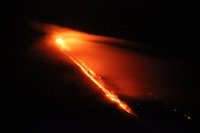| ||||||||||||||||||||||||||||||||||||||||||||||||||||||
 |
||||||||||||||||||||||||||||||||||||||||||||||||||||||
|
Watam Village and Sepik River Watam village (home to 300 people) gave us an insight into life in a remote Sepik village that very few outsiders have witnessed. There are no roads or electricity or phones, and there are few luxuries to be found. The villagers welcomed us with a special “dragon” dance and then continued with a performance of the dances of their ancestors. We learnt how to make Sago, the staple food of the Sepik coastline. Villagers come from this and other villages to set up their area of goods to sell. These included unique wooden carvings, woven baskets and shell jewellery. We travelled in the zodiacs along the Sepik River. The Sepik River has no actual river delta and stains the sea brown for up to 50 kilometres. It is said that Islanders off the coast can draw fresh water straight from the sea.
The dense vegetation and swampland along the river’s edge is home to many species of birds - egrets, herons, kites, jacanas, darters, cormorants, and kingfishers. Salt and freshwater crocodiles are also common. As we cruised away in the evening we were awed at the red fiery hot lava and sparks emitting from the Manam volcano that had recently started to erupt again. Alongside were outlines of the Blup, Blup and Bam volcanoes, names that illustrate the logical charm of the Melanesian Pidgin language. The Captain cruised slowly passed the spectacle allowing us to enjoy it to the full whilst we ate the barbecue of roast suckling pig and grilled prawns on the rear deck. The Sepik River The Sepik region is a large grassland reserve surrounding the Sepik River, one of the world’s longest rivers at 1,126km. The Sepik is navigable for almost its entire length. For years it has been a major trade artery linking the coast and the interior. Originating in the west at the Papua New Guinea/Indonesia border, the Sepik twists its way toward the coast, where the river mouth is more than a mile wide.
The people along the river depend heavily on it for transport, water and food. Their links are symbolised in many of their ancient and spiritual rituals such as the manhood initiation that requires painful carving of flesh on the backs of young men with razor blades in the pattern of a crocodile such as those lying on the banks of the river. Parts of the Highlands further up the river remain untouched just as they were when first discovered in 1933. Some of the villages have yet to see a white man.
The Sepik area is known for its quality of wood carvings and for the architecture of its Haus Tambarans – Spirit Houses. Traditionally, art in the Sepik was created in the service of magic, myth and ritual. Spirit Houses were lines with shields decorated with the faces of ancestors, mythical and nature spirits, whose likeness also appear on masks, suspension hooks for food and on the pillars which support the roof of the house. Ritual cannibalism was practiced as a means of protection against the spirit of an enemy killed in battle and for capturing the physical and spiritual powers. Often the head was not eaten but painted and hung in the doorway of the spirit house as a symbol of prowness and to bar entry to women and the uninitiated. | ||||||||||||||||||||||||||||||||||||||||||||||||||||||
 |
||||||||||||||||||||||||||||||||||||||||||||||||||||||













